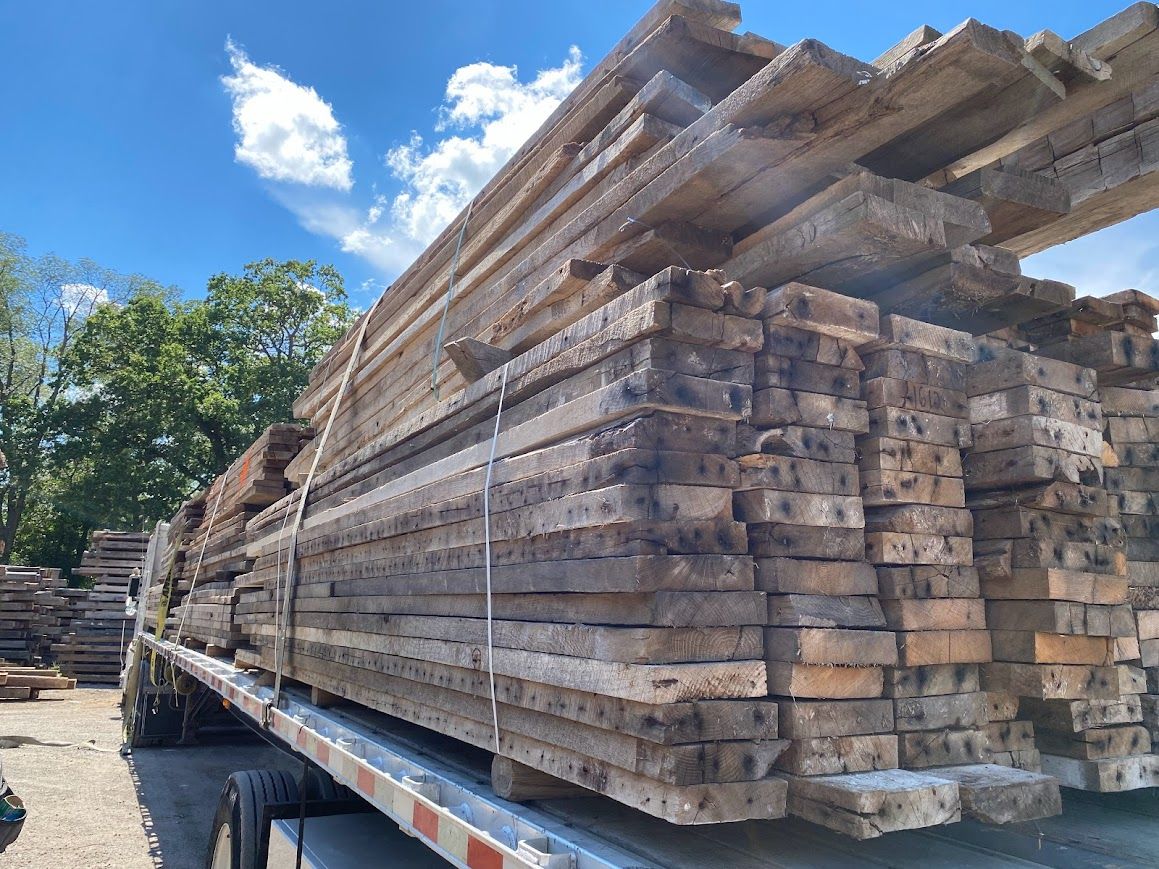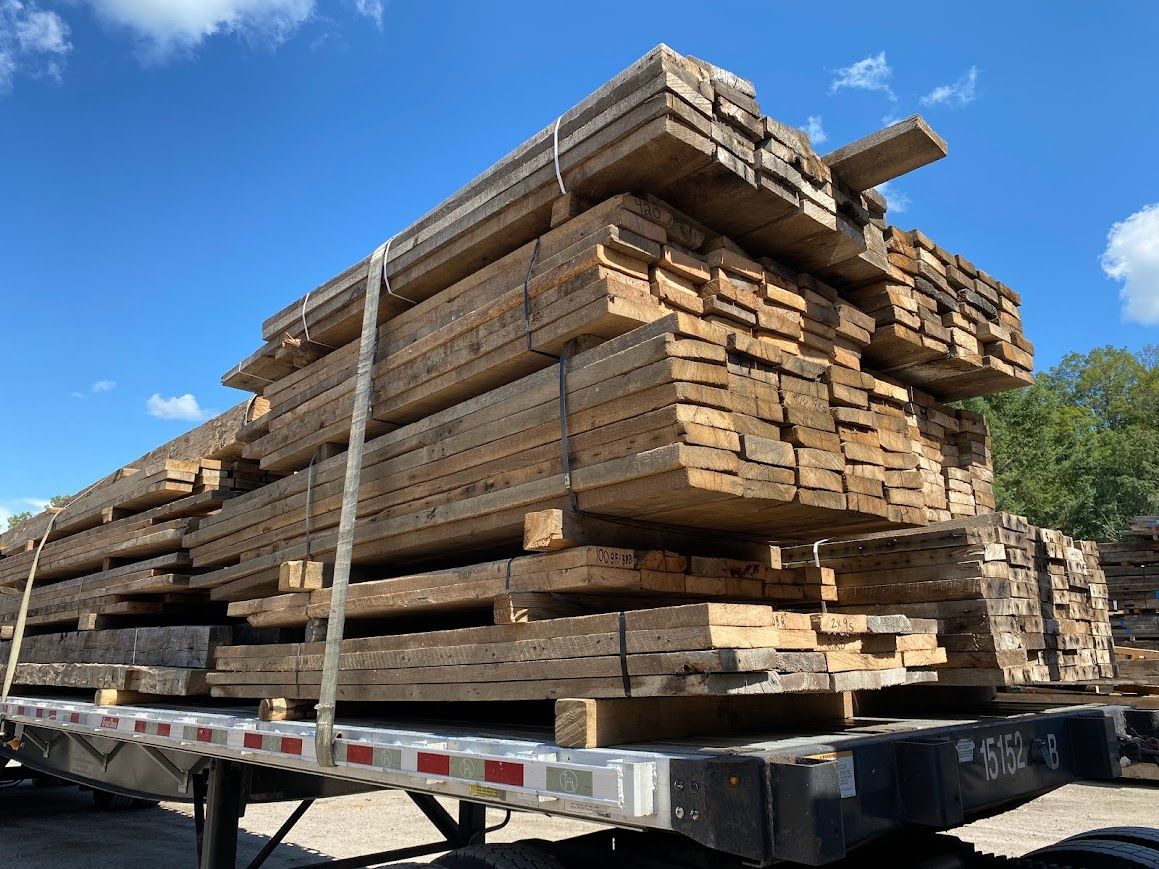What You Should Know About Using Dimensional Lumber
Understand dimensional lumber for versatile, sturdy building projects

Building something from scratch is exciting, but it comes with a common challenge: picking the right materials. Choosing dimensional lumber may seem simple, but your building projects can quickly turn frustrating without understanding its sizes, grades, and best uses.
In this guide, we will help you solve that problem. We’ll teach you how to pick the right type for your construction needs, avoid rookie mistakes like warping wood, and get insider tips to make your work easier and more effective.
By the end of this post, you’ll have the knowledge to confidently choose and use this essential construction material, setting yourself up for successful and professional-looking projects.
What Is Dimensional Lumber?
Dimensional lumber is wood that’s been cut to standard sizes and prepared for construction. Unlike rough lumber, which is cut straight from the mill, dimensional lumber is smoothed and dried to a specific level of moisture for stability.
The term "dimensional" relates to the sizing system used. For instance, a 2x4 piece of wood is labeled according to its rough size when first cut. However, after drying and planing, its actual dimensions shrink to about 1.5 inches by 3.5 inches. Understanding this difference is important when planning a project.
Common Sizes of Dimensional Lumber
Knowing the difference between nominal and actual sizes is essential. Here’s a quick guide to help:
Nominal Size vs. Actual Dimensions
- 1x4: 0.75" x 3.5"
- 2x4: 1.5" x 3.5"
- 2x6: 1.5" x 5.5"
- 2x8: 1.5" x 7.25"
- 2x10: 1.5" x 9.25"
- 2x12: 1.5" x 11.25"
These consistent measurements make it easier to plan and ensure that pieces fit well in your project.
Understanding Lumber Grades
Not all lumber is made equal. The grading system lets you pick the best quality for your needs.
Structural Grades
- Select Structural: The strongest and most reliable for load-bearing uses.
- Construction: Strong and common for framing.
- Standard: Moderate strength with some knots and defects.
- Utility: Lower strength, often used where appearance isn’t important.
Appearance Grades
- Clear: Almost no knots, perfect for visible or decorative projects.
- Select: Small, tight knots, great for trim or finishes.
- Common: Larger knots, suited for rustic or less-visible work.
Choosing the Right Wood Species
Different wood species have unique benefits. Here are some popular choices:
- Southern Pine: Very strong and widely used for structural work. It can be stained but sometimes has a resinous surface.
- Douglas Fir: Lightweight yet strong, making it ideal for framing. Its straight grain also makes it easy to handle.
- Hem-Fir: A blend of hemlock and fir species, great for general construction projects.
- Spruce-Pine-Fir (SPF): Affordable and versatile, but not as strong as some other options.
Why Moisture Content Matters
Wood reacts to moisture, which can lead to shrinking, warping, or cracking. Here are the main types of lumber based on moisture content:
- Kiln-Dried (KD): Dried to below 19% moisture. This is stable and less likely to warp.
- Green Lumber: Contains more than 20% moisture, making it prone to shrinking as it dries. It’s cheaper but riskier for precision work.
- Kiln-Dried Heat Treated (KDHT): This type is heated to kill insects and fungi and is often required for certain applications, like international shipping.
When in doubt, go with kiln-dried lumber for better stability and less hassle.
Applications for Dimensional Lumber
Framing
Choose construction or higher-grade lumber for framing. Always follow your local building codes to ensure your structure's safety.
Furniture Making
Pick high-grade lumber with minimal defects. Plan your cuts wisely to avoid knots and imperfections.
Outdoor Projects
For outdoor use, choose pressure-treated wood or naturally durable types like cedar and redwood that resist moisture and pests.
Trim and Finishes
Use clear or select-grade lumber for trim and other projects where appearance is key.
Best Practices for Handling Dimensional Lumber
Handling lumber properly prolongs its life and keeps it in good shape for your project.
Storage Tips
- Store wood flat and supported to prevent warping.
- If stored outside, cover the lumber while ensuring proper airflow.
- Avoid placing wood directly on the ground.
Selecting Pieces
Whenever possible, hand-pick your wood to find straight pieces with minimal warping or cracks.
Acclimation
Before starting a project, allow your wood to sit in your workspace for a few days so it can adjust to the local environment.
Cutting
Use sharp tools and support your material during cutting. Measure carefully, and account for the saw blade's width to get precise results.

Quality Issues to Watch For
Stay alert for these defects, as they can affect the durability and appearance of your project:
- Bow: Curve along the length of the face.
- Crook: Curve along the edge.
- Cup: A curve across the wood’s width.
- Twist: A corkscrew-like warping.
- Knots: Tight knots are fine for structure, but loose knots can fall out.
Cost Factors of Dimensional Lumber
The price of lumber changes depending on:
- Market demand.
- Species and grade.
- Local availability and transportation costs.
- Seasonal factors, like construction booms in summer.
To avoid running out of materials, always buy 10-20% more than you calculate for your project, allowing for cuts and defects.
Sustainability and Environmental Benefits
Using sustainable materials is better for the planet. Keep these points in mind:
- Certified Materials: Look for lumber certified by the Forest Stewardship Council (FSC) or Sustainable Forestry Initiative (SFI).
- Local Wood: Buying locally reduces the environmental impact of transport.
- Waste Minimization: Plan cuts carefully, and save scraps for smaller projects.
Wrapping Up
Dimensional lumber is a versatile and reliable choice for numerous building projects. By understanding its grades, sizes, and best practices for use, you can avoid common mistakes, improve your results, and ensure your projects last.
To learn more about how we honor craftsmanship and material quality, visit Bay & Bent. Whether you’re building furniture, framing a house, or just experimenting with woodworking, dimensional lumber is a trusted partner that helps bring your ideas to life.









